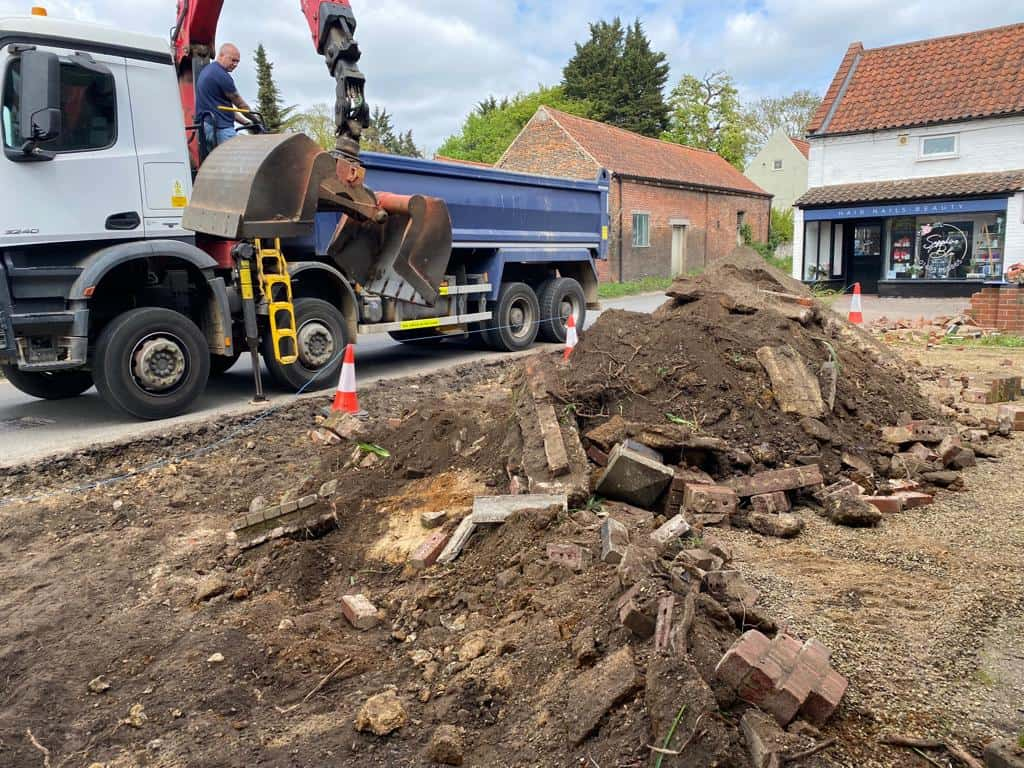Tarmac for Livestock Areas: Safe and Easy to Clean
Maintaining a clean and safe environment in livestock areas is crucial for the health and well-being of your animals. Choosing the right surface for these areas is essential, and one material that is proving to be highly beneficial for farmers is tarmac. At Royston Driveways in Royston, Hertfordshire, we specialise in providing tarmac surfacing solutions that are durable, easy to maintain, and provide a safe surface for livestock. In this blog post, we’ll explore why tarmac is an excellent choice for livestock areas and how it helps keep your farm running smoothly.
1. Durability and Strength
Livestock areas, such as yards, feeding areas, and walkways, experience heavy traffic from animals and vehicles. Tarmac is a tough, durable material that can withstand the weight and pressure exerted by livestock and farm vehicles without deteriorating.
- Long-lasting: Tarmac is resistant to wear and tear, making it ideal for high-traffic areas.
- Weather-resistant: Unlike gravel or dirt, tarmac is not affected by extreme weather conditions like heavy rain or snow, which can lead to muddy and slippery surfaces. It remains intact and functional throughout the year.
- No rutting or shifting: Unlike gravel surfaces, tarmac doesn’t shift under pressure, preventing ruts from forming, which can cause problems for both animals and vehicles.
With tarmac, you’ll have a surface that lasts, reducing the need for frequent repairs or resurfacing.
2. Safe for Livestock
Safety is a top priority when it comes to livestock areas. Tarmac offers a smooth, even surface that reduces the risk of injury to your animals.
- Even surface: Tarmac provides a smooth and even surface that eliminates the risk of sharp edges or uneven ground that could cause injury to animals.
- Non-slip properties: Tarmac surfaces are designed to provide grip, reducing the chances of slips and falls, especially in wet conditions.
- No loose material: Unlike gravel or stone, which can cause hoof damage or become a choking hazard if ingested, tarmac is solid and free of any loose material that could pose a danger to livestock.
This makes tarmac a safer option for both animals and workers who need to navigate these areas regularly.
3. Easy to Clean and Maintain
One of the biggest challenges of livestock areas is maintaining cleanliness. Tarmac is incredibly easy to clean compared to other surfaces, such as dirt or gravel, which can trap waste and debris.
- Simple to wash down: Tarmac can be hosed down easily, allowing for quick and efficient removal of waste, manure, and dirt.
- No accumulation of waste: Unlike gravel surfaces, tarmac prevents waste from sinking into the ground, ensuring that the surface remains hygienic and easy to manage.
- Low maintenance: Tarmac requires minimal maintenance. Unlike dirt tracks or gravel roads, you won’t need to constantly replenish material or level the surface.
This makes tarmac an ideal solution for those who need a clean and hygienic environment for their livestock without the added work of frequent upkeep.
4. Improved Drainage
Effective drainage is essential in livestock areas to prevent waterlogging and muddy conditions, especially after heavy rain. Tarmac surfaces are designed with the ability to handle water runoff efficiently.
- Drainage options: Tarmac can be laid with a slight slope to ensure water flows away from critical areas, preventing puddles or standing water that could create a slippery or unsafe environment for livestock.
- Permeable options: In areas where water retention is a concern, permeable tarmac options can be used to allow rainwater to drain through the surface, promoting effective water management.
With the right drainage system, tarmac ensures your farm remains dry and safe for your livestock, even during the wettest conditions.
5. Aesthetic Appeal
While functionality is the primary concern for any farm surface, tarmac also adds an aesthetic value to your property. A smooth, neat tarmac surface enhances the appearance of your livestock areas, which can improve the overall look of your farm.
- Professional appearance: A well-installed tarmac surface creates a clean, organised look that gives your farm a professional, well-maintained appearance.
- Customisable options: Tarmac can be coloured or finished in different ways to match the style of your property or create specific areas for different purposes.
Not only will your livestock areas be more functional, but your farm will also have an enhanced visual appeal.
Conclusion
Tarmac is a smart and practical choice for livestock areas. Its durability, safety features, ease of maintenance, and ability to provide a clean and hygienic environment make it ideal for farmers looking to optimise their operations. Whether you’re improving a feeding area, a yard, or a pathway, tarmac offers long-lasting, low-maintenance solutions that ensure the safety and efficiency of your farm.
At Royston Driveways, we specialise in providing tarmac surfacing solutions tailored to meet the specific needs of farmers in Royston, Hertfordshire, and surrounding areas. If you’re looking for a reliable, durable, and easy-to-maintain surface for your livestock areas, contact us today to learn more about how tarmac can improve the functionality and safety of your farm.
Call us on: 01763 295 192
Click here to find out more about Royston Driveways
Click here to complete our contact form and see how we can help with your driveway needs.

